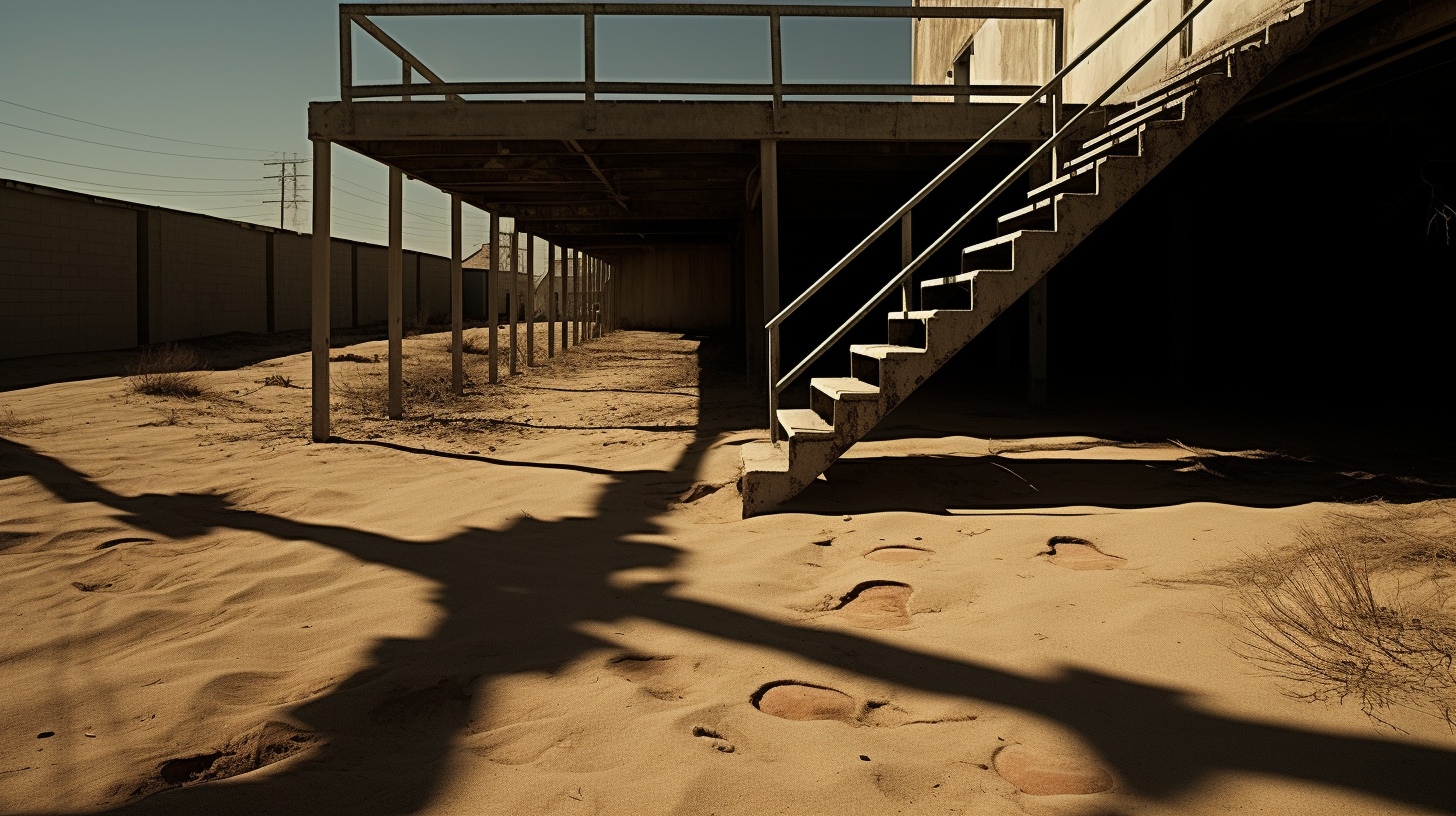In the unyielding grip of what some would call our new sun—blistering and cruel—there is a portrait of earth, parched under its gaze. Such is the canopy of our existence, where once luscious green sights are now draped in desiccated browns, and vibrant ecosystems are but hushed memories, whispered by the ghosts of flora and fauna that once were. This is our narrative in the world of ‘Shadows Cast by a Thirsty Sun,’ a tale of relentless drought and the stark reality it has forged.
Through this scorched lens, we explore the harrowing chronicles of the Dust Bowl 2.0, swathes of land lacerated by the unquenched thirst of the heavens. Fields that once brimmed with golden grains, now barren dirt and sand as if the very earth had forsaken its bond with the farmhand. Forests diminish in muted resignation, their leaves falling like whispers among the insatiable flames of ever-present wildfires.
It’s a tragic ballet, where cloudless skies perform the dance of aridity, keeling over reservoirs that once teemed with life. Here, in the shadow of the thirsty sun, we meet characters who are the very essence of resilience or, perhaps more aptly, desperation. Those who would gather under makeshift shades, congregations of humanity sheathed in desperation, while sunscreen is applied like warpaint against an unforgiving UV assault. ‘Our skins may darken, our lips may crack, but here we stand, defiant,’ declares one parched voice amidst the dry howl of an arid wind. Their stories are the bloodline of our realm, essential yet choked by dust.
This isn’t merely the tale of nature’s unmerciful evolution but a commentary on our own reflections in the cracked and begging earth. For within these narratives lies the profound irony that the water we once wasted now eludes our greatest advances in retrieval, each droplet a currency more precious than the petroleum wars of epochs past. It is an irony sewn with the same hands that fed the industries which stand, shimmering mirages of smokestacks, as monuments to our folly. Technology—our dearest salvation and cruelest tormentor—toys with us, offering solutions always a step beyond our wilting grasp.
In this parched dystopia, what lessons can we distill from the moisture still left among the wilted stems and dry ‘ocean’ beds? We delve deep, uncovering tendrils of knowledge and adaptation—small successes in permaculture, innovations in conservation, and rainwater harvesting techniques that turn to antique wisdom for modern salvation. Our intellect challenges the relentless sun, yet, one cannot shake the feeling that our solutions always lag a whisker behind nature’s ravenous stride.
The danger is not just in the physical thirst but in the existential one. There’s a sobering futility as societies crumble when aquifers run dry, and ancient conflicts are reborn over the ownership of a mere puddle. Alas, it seems even in the face of such cataclysm, humanity’s old habits die hard. And as these social fabrics decay, leaving only survivalist threads, we glimpse into what might resemble the beginnings of human migration patterns, altered not by the push for fertile land, but the pure necessity for damp soil.
As we come to the end of our exposition, is there a shimmer of hope, a droplet of positivity to cling on to? Here, in the rustling of the last leaves, against the backdrop of inevitable plight, the shadow cast by our thirsty sun keeps us bound to the stark reality; we must exist in the grip of a world we were complicit in scorching.
Perhaps, in this landscape of relentless sun and shadow, the greatest dystopian revelation is the one that mirrors our own potential future—a cautionary tale cloaked not in science fiction, but in the science of our very real climate neglect.
